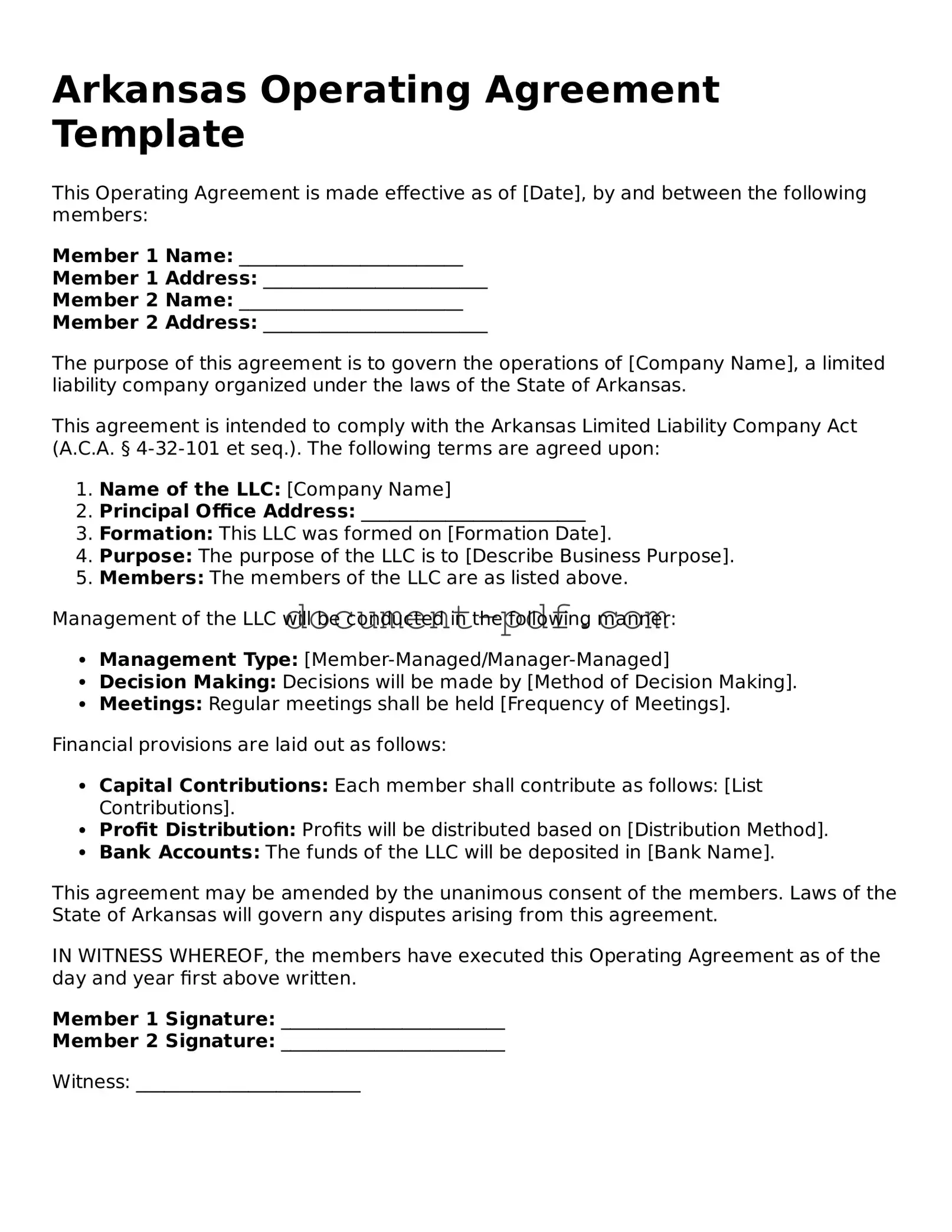Arkansas Operating Agreement Template
This Operating Agreement is made effective as of [Date], by and between the following members:
Member 1 Name: ________________________
Member 1 Address: ________________________
Member 2 Name: ________________________
Member 2 Address: ________________________
The purpose of this agreement is to govern the operations of [Company Name], a limited liability company organized under the laws of the State of Arkansas.
This agreement is intended to comply with the Arkansas Limited Liability Company Act (A.C.A. § 4-32-101 et seq.). The following terms are agreed upon:
- Name of the LLC: [Company Name]
- Principal Office Address: ________________________
- Formation: This LLC was formed on [Formation Date].
- Purpose: The purpose of the LLC is to [Describe Business Purpose].
- Members: The members of the LLC are as listed above.
Management of the LLC will be conducted in the following manner:
- Management Type: [Member-Managed/Manager-Managed]
- Decision Making: Decisions will be made by [Method of Decision Making].
- Meetings: Regular meetings shall be held [Frequency of Meetings].
Financial provisions are laid out as follows:
- Capital Contributions: Each member shall contribute as follows: [List Contributions].
- Profit Distribution: Profits will be distributed based on [Distribution Method].
- Bank Accounts: The funds of the LLC will be deposited in [Bank Name].
This agreement may be amended by the unanimous consent of the members. Laws of the State of Arkansas will govern any disputes arising from this agreement.
IN WITNESS WHEREOF, the members have executed this Operating Agreement as of the day and year first above written.
Member 1 Signature: ________________________
Member 2 Signature: ________________________
Witness: ________________________
